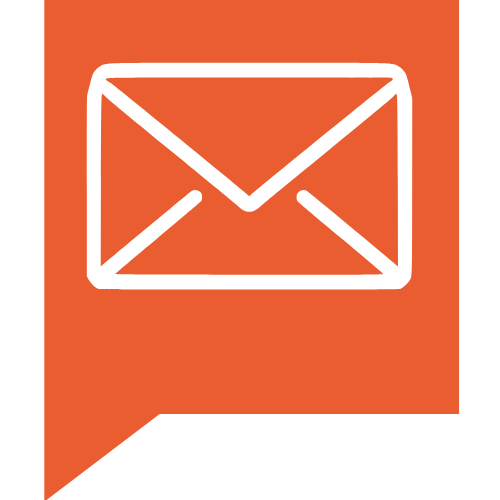7 Using Email Marketing to Personalize the Customer Journey
In the ever-evolving landscape of digital marketing, personalizing the customer journey through email campaigns is crucial. This article delves into cutting-edge strategies, informed by insights from leading experts, to effectively tailor messaging, utilize AI analytics, and segment audiences for maximum engagement. Discover how expert-driven tactics can transform ordinary email blasts into powerful tools for fostering lasting customer relationships.
- Leverage Behavior-Driven Automation for Tailored Messaging
- Integrate AI Analytics for Refined Email Campaigns
- Implement Contextual Intent Scoring for Targeted Emails
- Segment Subscribers to Enhance Customer Connections
- Use Dynamic Content to Improve Engagement Rates
- Craft Personalized Dialogues Through Data-Driven Insights
- Refine Strategies with Continuous Response Monitoring
Leverage Behavior-Driven Automation for Tailored Messaging
Email marketing is one of the most powerful ways to personalize the customer journey, and the key is using behavior-driven automation rather than generic blasts. I've found that segmenting subscribers based on their interactions--such as website visits, past purchases, or email engagement--allows for highly tailored messaging that feels relevant rather than spammy.
One of the most effective strategies I use is dynamic content blocks that change based on a subscriber's preferences or behavior. If someone browses a specific product but doesn't purchase it, a follow-up email with personalized recommendations based on that interest can nudge them toward conversion. Leveraging data points like purchase history, cart abandonment, and even survey responses helps refine these emails further--the more granular the segmentation, the better the engagement. Customers expect brands to "know" them, and well-executed email personalization turns marketing into a conversation rather than a one-way pitch, increasing both trust and long-term customer retention.

Integrate AI Analytics for Refined Email Campaigns
Personalizing the customer journey through email marketing requires a strategic approach that leverages behavioral, demographic, and engagement data to deliver relevant content at the right time. We use segmentation, automation, and dynamic content to ensure each subscriber receives tailored messaging based on their interests, actions, and stage in the funnel.
Key data points we leverage include past email engagement, website activity, purchase history, job title, industry, and pain points gathered from interactions. For instance, if a subscriber clicks on a case study about increasing email deliverability, they receive follow-up content on best practices, followed by a targeted offer. By integrating AI-powered analytics, we continuously refine our campaigns to ensure relevance, boost engagement, and drive higher conversions.

Implement Contextual Intent Scoring for Targeted Emails
We've moved beyond basic demographic and behavioral data to implement what we call "contextual intent scoring." For small business clients, we analyze the combination of content engagement, website navigation patterns, and session timing to infer specific buying contexts. For example, someone researching during business hours with linear navigation through product pages suggests different intent than evening browsing with frequent returns to comparison pages. Our system identifies 14 distinct browsing patterns that indicate specific purchase contexts, allowing us to tailor messaging accordingly. This approach increased email conversion rates by 43% by addressing the contextual needs of the buyer rather than just their demographic profile or isolated behaviors.
Segment Subscribers to Enhance Customer Connections
Email marketing allows us to segment subscribers based on their interests and behaviors. We use data points like website activity, past purchases, and content engagement to tailor messages. This includes personalized product recommendations, targeted educational content, and exclusive offers. By leveraging these insights, we deliver relevant and timely emails that enhance the customer journey and foster deeper connections.

Use Dynamic Content to Improve Engagement Rates
Using data and analytics to personalize marketing efforts can significantly improve the customer experience. One effective method is analyzing customer behavior, preferences, and demographics to tailor content and product recommendations. For example, an e-commerce platform might track a customer's browsing history and use this data to suggest personalized product recommendations on the homepage or through email campaigns.
By leveraging customer data, businesses can create targeted campaigns that speak directly to individual needs, improving engagement and conversion rates. A great example of this is using dynamic content personalization, where the messaging or offers presented change based on customer segments or individual browsing patterns.
Craft Personalized Dialogues Through Data-Driven Insights
Email marketing, when executed thoughtfully, transforms from a broadcast tool into a personalized dialogue. The key lies in leveraging data to understand individual preferences and behaviors, then using those insights to craft targeted messages. Here's what you need to know: we focus on segmenting our email lists based on a variety of data points. This includes past purchase history, browsing behavior, and engagement with previous emails. For instance, if a subscriber has shown interest in a specific product category, we tailor our emails to showcase related items and relevant content.
We also leverage data related to subscriber demographics, such as location and industry. This allows us to personalize content and offers to resonate with specific segments. Additionally, we track website activity, such as pages visited and time spent on site, to identify areas of interest. This allows us to personalize follow-up emails with relevant information.
Furthermore, we personalize email content based on the subscriber's stage in the customer journey. New subscribers receive welcome emails that introduce our brand and provide valuable resources. Subscribers who have made a purchase receive order confirmations and personalized recommendations for related products. We also use dynamic content to personalize email subject lines and body copy based on individual preferences. This level of personalization not only enhances the customer experience but also drives higher engagement and conversion rates.
Refine Strategies with Continuous Response Monitoring
Email marketing shines as a tool for personalization, creating a pathway to connect with each subscriber in a way that feels individualized and exclusive. By segmenting email lists based on user behavior or demographic information, companies can target their messages more effectively. For instance, an online retailer might send tailored promotions based on past purchase history or browse behavior on their site, ensuring that the offers are relevant to the recipient's known preferences.
To elevate personalization further, marketers often leverage data points such as location, engagement history (like click-through rates and open rates), and even personal milestones like birthdays or anniversaries. Advanced techniques include using machine learning algorithms to predict future behaviors based on accumulated data, which can refine the timing and content of emails even further. The ultimate goal is to make every email feel like it was crafted specifically for the individual, increasing relevance and engagement, which, in turn, boosts customer loyalty and sales. By carefully monitoring and reacting to the response from these personalized emails, companies can continuously improve their strategies, developing deeper connections with their audience.





